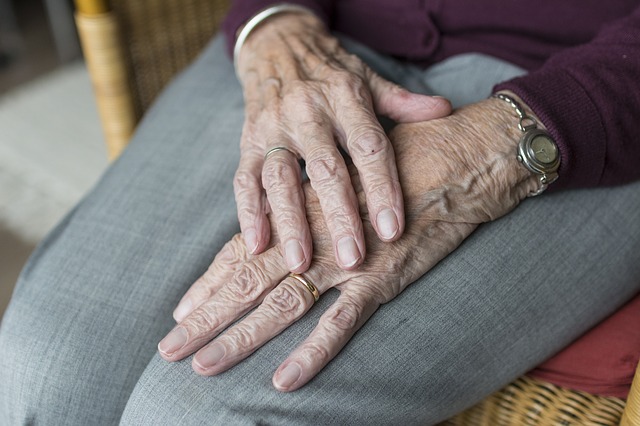Blog
From Stress to Pain and Back Again
Stress and back pain perpetuate each other
Stress is a condition of mental or emotional strain that results from overwhelming or demanding factors. At its most useful, external stressors provoke the fight-or-flight response which helps you perform better during a given task. But anything beyond this and stress starts to take a toll on well-being. One way that stress manifests itself physically is through muscle tension: chronic stress provokes muscles of the body to tighten as a preventative tactic for avoiding injury. This near constant state of contractedness can have a direct impact on spinal health. Back pain then causes mental anguish which perpetuates the stress further. So how do we break ourselves out of this vicious cycle?
Christmas Shopping is a Drain on the Body and Brain
Christmas shopping has been exposed as a stress-fraught affair
Each year, as the multiplicity of consumerism increases, and the streets get marginally thicker with people, the stress of christmas shopping becomes more palpable. For many of us, the holiday season is a balance between the simple joys of life like family and more outstanding concerns such as the toll on our wallets. This holiday season in full swing, take steps to ensure your sanity above all else!
Anti-Inflammatory Christmas
What would christmas be if it weren’t chalk full of inflammatory ingredients
The recipes we love are full of sugar and saturated fats, two of the worst culprits when it comes to inflammation. If you suffer with chronic back pain, but baking is your family’s christmas tradition, take care this season to monitor your intake of inflammatory ingredients. Avoing inflammation is a critical way of mitigating back pain, especially if you suffer from autoimmune disorders including:
- Ankylosing spondylitis
- Axial spondyloarthritis
- Rheumatoid arthritis
If your joints are stiff and inflamed, take a look at our tips for mitigating inflammation this holiday season.
Exercise Snacking Your Way Through this Holiday Season
Life is busier during the holiday season- that means it’s time to adjust your fitness habits
You’ve worked hard all year to reach the plateau of 150 minutes of moderate aerobic exercise per week. But with the holiday season in full swing, you have noticed a dip in activity levels. This is likely going to accelerate as the month moves along, culminating in a week of festivities and feasting around Christmas that leave you with even less time to exercise. Amidst all the baking, socializing and shopping, some people quit their fitness plans completely. Don’t let this be you this holiday season! Read on to find our tips for finding exercise amidst the chaos of Christmas.
Fitness Trainer Santa Says: Get a Heat Pack for the Athlete in Your Family
This holiday season, heat is the athlete’s best friend
When considering what to gift the serious athletes in your family, consider the gift of heat. Every athlete is pushing their body and very few of them can afford to be sidelined for days waiting for their muscles to recover. For many athletes, the holiday season is a time of slowing down and relaxing in the living room with family. What better time to turn them on to the benefits of heat for healing?
A 4-Step Plan for Overcoming Sciatica
Taking action to overcome your sciatic nerve pain
Sciatica is a blight on your everyday health. We are always surprised to find how long people let it linger before they seek help. The number one way to overcome sciatica is to address it as soon as possible; letting it linger only compounds the problem and makes the recovery process longer. Sciatica is usually an easy diagnosis; the simple leg-raise stretch can usually give us a good indicator as to the prominence and severity of your sciatica. A full physical examination will tell us exactly where the problem is originating and guide our course of action.
Take steps to overcome sciatica today
Once we determine that sciatica is the true source of your lower back pain, we get you started on a four-step plan for overcoming it:
- Reducing pain. Providing chiropractic adjustments to restore spinal alignment and relieve the sciatic nerve from problematic compression.
- Utilizing deep-tissue massage to encourage better circulation and catalyze the healing process.
- Using corrective exercise and stretching to further restore mobility to the region and prevent sciatica from recurring. A further focus is placed on conditioning the core stabilizing muscles to stabilize the lower spine.
- Teaching appropriate posture for normal and athletic activities that will further aid your lower spine in maintaining stability.
Enough is enough: calling time on sciatica in your life
When you have decided that you’ve had enough of the sciatic nerve pain affecting your life, give our office in Milpitas a call. We are standing by to help you overcome sciatica or any other condition that is causing you back pain.
Sarcopenia is one of the Greatest Threats Facing our Seniors
Age-related muscle loss will affect everyone
Muscle loss due to age is known by the rather unsavory term sarcopenia. While the causes are not exactly agreed upon, we do know that age-related muscle loss contributes to:
- Less mobility
- Less ability to perform everyday tasks
- More vulnerability to injury
- Loss of independence
Sarcopenia varies in intensity, but the most important determining factor is how much muscle you start with. If you are a relatively fit 40-something, the decline may not be as noticeable as if you have a weak musculature to begin with. As you move into your 50s and 60s the muscle loss accelerates until it supersedes the rate at which you can replace muscle; this deficit is what contributes to frailty in our elderly populations.
Strengthening Your Spine Three Stretches at a Time
For people who sit alot, strengthening and stretching the core is imperative
Sitting puts the spine under more downward pressure than any other position, and when we pile consistently poor posture on top, we have set a course for spinal degradation that can be hard to reverse. This is because the more you sit, the weaker your core gets, and the harder it is for you to maintain good posture. Extricating yourself from this vicious cycle begins by taking breaks from sitting at least once an hour and focusing on the strength of your core stabilizing muscles. Below you will find three simple movements that can be performed from anywhere, designed to lower your risk for back pain.
A More Calculated Approach to Treating Back Pain
Flipping the script: a new way to look at your back pain
If you knew that the traditional methods for treating back pain were considered only somewhat effective and that some could cause even more harm than benefit, would you continue prescribing these methods? Faced with overwhelming evidence that traditional methods are failing our community of back pain sufferers, the health industry has continued to push treatments which fail to provide effective pain relief.
Turn Walking into A Full Body Tonic
Walking is one of the most powerful ways you can influence your spinal health
Measured by total number of steps, Americans walk less than most other developed countries which is a problem when you consider that walking more is linked with weighing less. And keeping the weight down is one of the best things you can do for your spine! Not only does walking affect weight, but it also contributes to improved circulation, more muscle and better range of motion. All of these things are part of a holistic-health lifestyle that prevent the onset of spinal problems. So here’s our health challenge to you: can you add 2 minutes of walking per hour of being awake to your daily schedule? Start small in five minute increments and see if you can eventually reach 30 minutes per day of walking and you will feel noticeably better.

